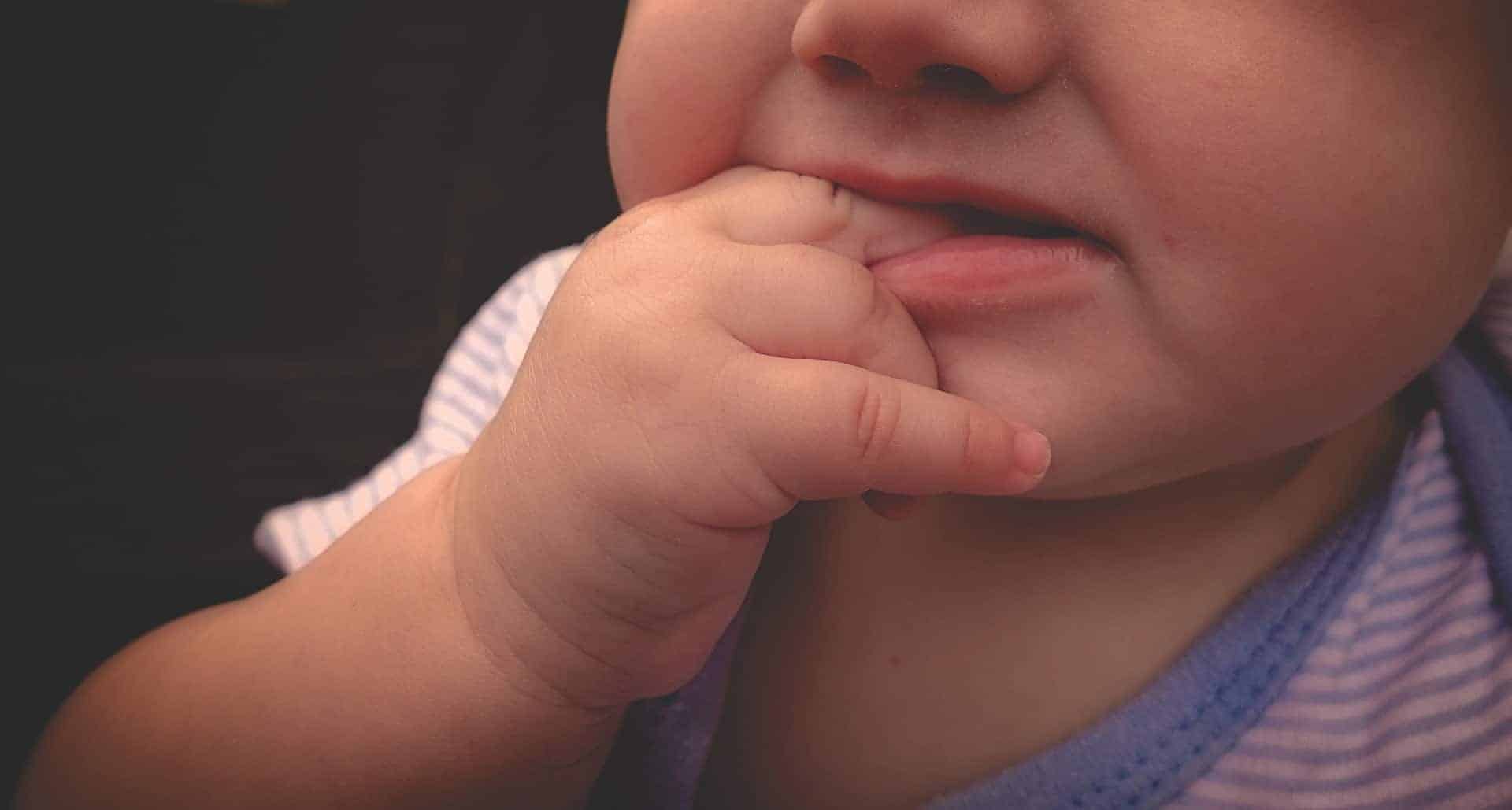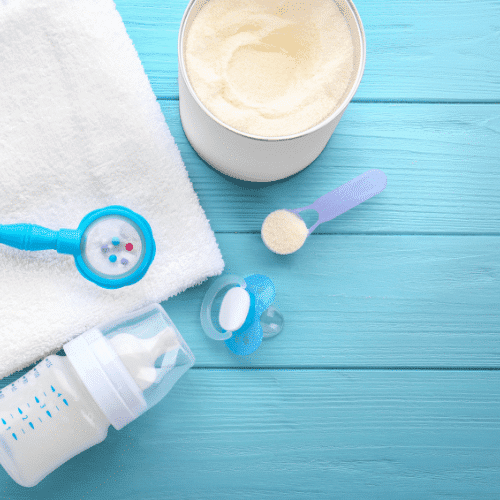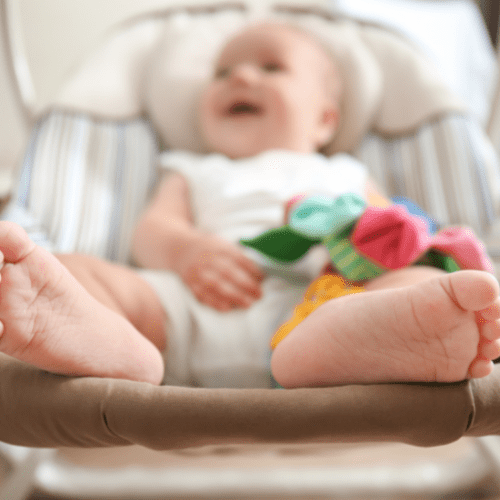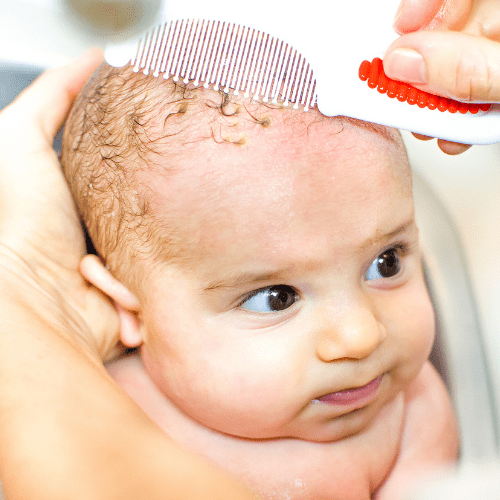For many parents of infants, sleep comes to be your top priority since if your baby isn’t sleeping, neither will you. And life is more difficult than usual when you don’t get enough sleep.
You need your kid to sleep properly, which means he or she should be both comfortable and safe. Your baby’s sleepwear can help with each of these things, but which option is better? For a newborn, should you use a swaddle or a sleep sack?
Stepping into any store’s baby area will present you with an unlimited array of newborn sleepwear options that can be intimidating so you need to know your choices beforehand. Here are some ways to know what these things are and how they affect your baby’s sleep health.
As an Amazon Associate I earn from qualifying purchases. The links below may be affiliate links. Please read my disclosure policy for more information.
Swaddle/Swaddling
For new parents, swaddling is either a complete mystery to you or you don’t know the details that concern it.
Swaddling has existed since the beginning of time, but the reasons behind it and the methods used for it have developed.
Babies were swaddled when Rome reigned by wrapping them with lengthy pieces of muslin and attaching them to a “cradle-board” which is a plank of wood to hold them cozy and encourage their limbs to develop right. This was done every day until they hit the 9th month.
This was not beneficial to newborns, and around the 18th century, a doctor named Cadogan attempted, but unsuccessfully, to ban swaddling. The reasons to swaddle which are sleep-related have gained ground again in modern times.
Muslin is yet a favorite swaddling fabric because of how soft it is on a newborn’s fragile skin. Of course, the goal is to keep the infant in a snug, secure, and reassuring grip, but the sameness ends there.
Swaddling is now performed with a huge square of cloth or with baby-friendly material with velcro, sewed pre-folds or zips so it can be easier to do.
Swaddling practices and rules ensure that it is safe for a newborn’s limbs and developing body and also prevents Sudden Infant Death Syndrome or SIDS.
Reasons To Swaddle a Newborn
- It relaxes and soothes the infant, preparing them for sleep.
As a result, swaddling is beneficial to babies who suffer from colic. Swaddling replicates body warmth and closes physical contact, which is ideal for babies who refuse to be put down.
- It reduces nighttime wakings, especially those caused by the “Moro” reflex. This is also known as the startle reflex.
If you’ve ever seen a newborn morph into a stunned bundle of nerves for no obvious reason, you’ll understand what the reflex is about. It’s a birth reflex that doesn’t serve much use these days. This is what you’re seeing when your child’s arms or legs spasm suddenly in their sleep.
Our Top 5 Swaddles
Sleep Sack
Wearable blanket, sleep bag… These are both other names for a sleepsack. These substitute phrases should give you a good notion of its identity. A sleepsack has no swaddling function; it’s merely a means to give an infant an extra dose of warmth while eliminating blankets in the crib, as loose blankets aren’t healthy for a baby.
Advantages of putting your baby in the sleepsack
- The main benefit of a sleepsack over a swaddle blanket is its safety.
Sleepsacks come in various thicknesses. They have the same TOG rating as a duvet making it easy to keep the baby warm if necessary. To do this, swaddling would require multiple swaddle cloths.
- Sleepsacks are considerably easier to wrestle your infant into whereas swaddling securely and precisely with an “easy” swaddle sheet takes some practice and ability.
- Sleepsacks make late-night diaper changes easy because there is bottom region access in most of them. Only very few swaddle blankets allow this.
- For newborns with only a minor Moro reflex, sleepsacks may be sufficient, but with a lot of newborns, a swaddle, no matter how well it fits, will be quite as beneficial.
Which is safer: sleep sacks or swaddles?
Swaddles and sleepsacks are both safe to use when done correctly.
A swaddle is only appropriate for the first few months after birth until the infant can turn over, which usually occurs at the age of 4 to 6 months. It’s no longer safe to use once they’ve learned to roll.
Swaddles are designed for newborns and babies, however, they should no longer be worn once a child can roll over on her own. Because your child’s limb movement is restricted, she or he may suffocate if she or he rolls onto their stomach.
It’s also crucial to secure a swaddle tightly enough so that it doesn’t come free and slide off, posing a suffocation risk. It’s also vital to avoid tying a swaddle too tightly to prevent ventilation restriction.
Investing in a swaddle with velcro or another means of securing it is a wise decision, as both of these problems are more likely when a loose blanket is used as a swaddle.
Sleepsacks can be utilized until a child reaches the age of a toddler (or even later). They permit infants to freely move their arms, but their legs are still restricted.
Swaddling is a safe and effective method for helping relax your baby and promote longer periods of sleep, according to the American Academy of Pediatrics. However, knowing when to cease swaddling and switch to a sleep sack is crucial.
When your baby tries to roll over, you should cease swaddling them. Every infant is different, but this milestone is commonly reached around the age of four months.
Swaddling can be problematic for rolling newborns since they won’t have their arms free, putting them in a perilous sleep condition if they roll over while swaddled.
Our Top 5 Sleepsacks
Things to Consider When Shopping for Sleepwear
It can be difficult to choose the right sleep sack or blanket for swaddling to use but it doesn’t have to be. When it comes to picking a swaddle or a sleep sack for your baby, there are a few things to consider.
Type of fabric
You must select the fabrics for wrap blankets that are the best. A blend of cotton and bamboo or any of each of the two are ideal for fabrics that are close to or in contact with your newborn’s delicate skin.
Fabrics created from bamboo are referred to as “rayon made from bamboo”, “viscose” or just “rayon”.
One benefit of these and cotton is how breathable they are. Your baby will be comfortable and will not overheat.
Organically grown cotton is usually preferred to conventional cotton since it is softer and more environmentally friendly.
Try viscose rayon if you want more softness as it takes moisture away much better than cotton. Although the chemicals used to process bamboo into fabric may remove much of it, the fabric may retain some inherent antibacterial qualities. Note that Bamboo fabrics will never be certified as “organic” due to the usage of chemicals in their production.
Controlling the temperature of babies when swaddled or wrapped.
SIDS is associated with overheating. Furthermore, if it is too hot or chilly, your newborn will not sleep properly. So, as previously stated, make sure the baby is at a temperature that isn’t uncomfortable.
Layering the infant correctly under the swaddle or sleep sack is the most important strategy to keep the baby at a suitable temperature.
Your newborn will most likely be at the correct temperature for the approved temperature a baby should be which is 16-20 degrees Celsius (61-68 degrees Fahrenheit) if they are dressed like this:
Layer a bodysuit or onesie with pajamas or a sleep suit and then the swaddle or sleepsack.
Swaddling blankets or sleepsacks for newborns
Anything that comes in contact with a baby’s sensitive skin must be free of irritation. The fabric should be incredibly soft and pleasant if you choose cotton or viscose rayon/rayon/rayon manufactured from bamboo.
However, keep an eye out for any irritating seams, fabric folds in odd locations, velcro, zippers, or other fastenings. Sleepsacks, not swaddle blankets, are the only items that fall under this category.
Easy access for nighttime diaper changes with a sleep sack or swaddling.
All conventional sleep sacks include simple access to your baby’s bottom allowing you to change diapers easily and discreetly at night.
When shopping for sleepsacks, try to find one with twin zippers so you can open the underside and not entirely expose your precious child. You might even be able to avoid disturbing their sleep for a fast diaper change.
Style
There are dozens, if not hundreds, of different patterns from which to choose. You could decide to buy plain ones to complement everything, or cute patterns like unicorns, rainbows, or sophisticated abstract prints to represent your personality and taste. Numerous brands come in three-packs, so you’ll have more than enough to choose from.
It should be easy to pick between sleep sacks and swaddle blankets now that you understand the distinctions between the two. Whether you prefer a swaddle blanket or a sleep sack, both are helpful for a newborn’s comfort and sleep advantages.
















